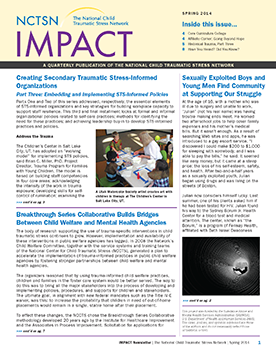
NCTSN Impact Newsletter: Spring 2014
Highlights creating STS-informed organizations, building bridges between child welfare and mental health agencies, and one young man’s journey through sexual exploitation to mentoring others.
The following resources on child trauma were developed by the NCTSN. To find a specific topic or resource, enter keywords in the search box, or filter by resource type, trauma type, language, or audience.

Highlights creating STS-informed organizations, building bridges between child welfare and mental health agencies, and one young man’s journey through sexual exploitation to mentoring others.
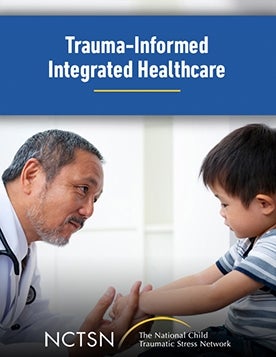
Includes an overview of trauma-informed integrated healthcare by defining what it is (and what it is not), its goals and advantages, as well as benefits and challenges across four different integration models.

Provides information on how to talk to children about tsunamis. This tip sheet describes what a tsunami is, how warning systems for tsunamis work, and tips for parents and caregivers on how to talk to children about tsunamis.

Discusses the potential impact of opiates on the developing fetus and the baby.
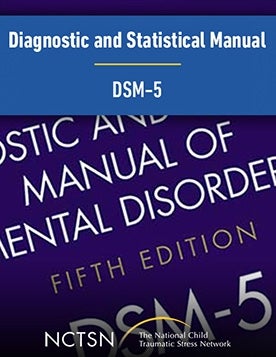
Highlights changes in the DSM-5, particularly in the area of Trauma and Stress Related Disorders, including special considerations for clinicians working with young children and their families.
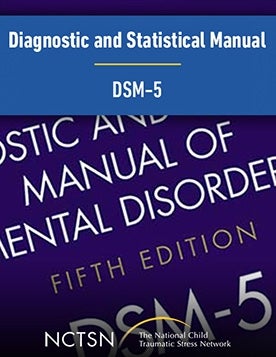
Discusses the implications of the changes in the DSM-5 as they relate to young children.
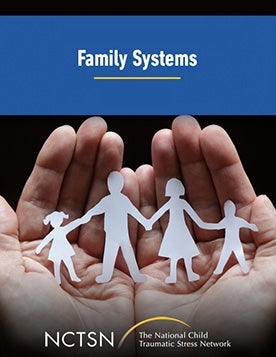
Discusses existing theoretical and practical perspectives on family resilience and the clinical and research implications for children and families who have experienced trauma.
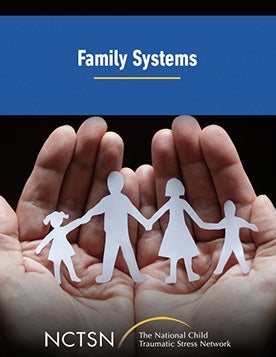
Covers current issues in family system assessments and family level interventions.

Provides information about how to talk to children about mass violence. This tip sheet describes ways to talk to children about mass violence, including how to start the conversation, how to deal with incorrect information, limiting media exposure, common reactions, and when to seek help.
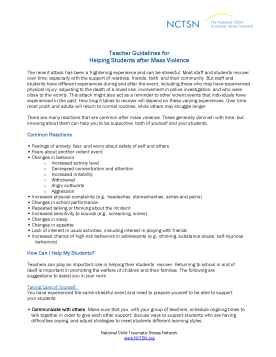
Offers teachers guidance on helping students after a mass violence event. This fact sheet describes common reactions students may have, how teachers and school staff can help, as well as engage in self-care after a mass violence event.
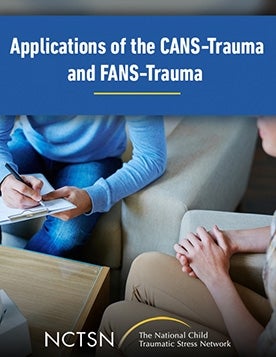
Gives an overview of the purpose and utility of the CANS-Trauma Comprehensive as an innovative, trauma-informed assessment strategy.

Gives information to parents and caregivers about media coverage following a shooting. This tip sheet describes what parents can do to help their children, media exposure after events, and talks about what it is like when a family is a part of the story.